Monthly Updates on Recent Books in the History of Christianity
To raise awareness of recent books in the history of Christianity, the editorial staff of Church History: Studies in Christianity and Culture highlights each month a list of 10-15 books in diverse periods and geographical regions that we hope will be of interest to our members. We include here below the eighteenth monthly list, chosen by our staff, with excerpts from the publishers’ blurbs.
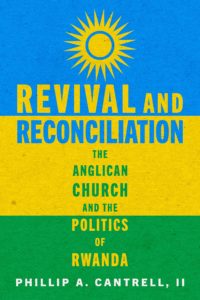
Philip A. Cantrell II, Revival and Reconciliation: The Anglican Church and the Politics of Rwanda. 2022
When Europe began colonizing Rwanda in the late nineteenth century, the Anglican Church played a significant and long-lasting role in controlling the colony through the Ruanda Mission. This informative volume shows how the church repeatedly aligned with the regime in power and failed to take account of its own history in fomenting ethnic tensions prior to the 1994 genocide. In recent years, the media has depicted Rwanda as a model of unity, development, and recovery, yet Phillip A. Cantrell II argues that not all is as it seems, as he takes a critical look at the church's complicity with authoritarian rule—from the Tutsi monarchy to the Rwandan Patriotic Front.
Drawing from new archival materials as well as on-the-ground field research, Revival and Reconciliation is a Rwanda-centered account of the country's ecclesiastical and national historiography. Cantrell calls attention to the harms the postgenocide church risks doing should it continue to support false narratives about Rwanda's colonial and postcolonial past—with dangerous consequences for the future.
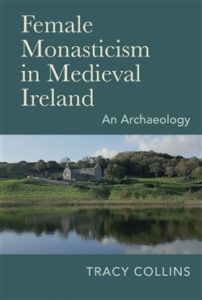
Tracy Collins, Female Monasticism in Medieval Ireland: An Archaeology. 2021
This book is the first to explore the archaeology of female monasticism in medieval Ireland, primarily from the twelfth to the sixteenth centuries. Nuns are known from history, but this book considers their archaeology and upstanding architecture through perspectives such as gender and landscape. It discusses the archaeological remains associated with female monasticism in Ireland as it is currently understood and offers insights into how these religious communities might have lived and interacted with their local communities. It briefly includes female religious of the early medieval period, other female religious, such as anchorites, while providing a wider European monastic context. While some nunneries used what is considered a typical monastic layout―of a church and other buildings arranged around a central area―this research has found that in many cases a nunnery was a small church with attached accommodation, or a separate dwelling; particularly when nuns lived in towns.
Medieval women became nuns for various reasons and followed a daily routine called the divine office, with occasions, like saints’ feast days, celebrated in special ways. It is sometimes suggested that all nuns were locked away, but history and archaeology show that they had many connections with the world outside. Nunneries had to maintain these ties in order to function and stay relevant, so the local community and benefactors would continue to support the nunnery as their church, and for some, their place of burial.
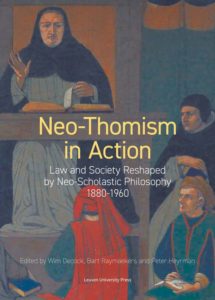
Wim Decock, Bart Raymaekers, and Peter Heyrman, eds. Neo-Thomism in Action: Law and Society Reshaped by Neo-Scholastic Philosophy, 1880-1960. 2021
In his encyclical Aeterni Patris (1879), Pope Leo XIII expressed the conviction that the renewed study of the philosophical legacy of Saint Thomas Aquinas would help Catholics to engage in a dialogue with secular modernity while maintaining respect for Church doctrine and tradition. As a result, the neo-scholastic framework dominated Catholic intellectual production for nearly a century thereafter.
This volume assesses the societal impact of the Thomist revival movement, with particular attention to the juridical dimension of this epistemic community. Contributions from different disciplinary backgrounds offer a multifaceted and in-depth analysis of many different networks and protagonists of the neo-scholastic movement, its institutions and periodicals, and its conceptual frameworks. Although special attention is paid to the Leuven Institute of Philosophy and Faculty of Law, the volume also discloses the neo-Thomist revival in other national and transnational contexts. By highlighting diverse aspects of its societal and legal impact, Neo-Thomism in Action argues that neo-scholasticism was neither a sterile intellectual exercise nor a monolithic movement. The book expands our understanding of how Catholic intellectual discourse communities were constructed and how they pervaded law and society during the late 19th century and the first half of the 20th century.

Stefan Drechsler, Illuminated Manuscript Production in Medieval Iceland: Literary and Artistic Activities of the Monastery of Helgafell in the Fourteenth Century. 2021
This book examines a cultural revolution that took place in the Scandinavian artistic landscape during the medieval period. Within just one generation (c. 1340-1400), the Augustinian monastery of Helgafell became the most important centre of illuminated manuscript production in western Iceland. By conducting interdisciplinary research that combines methodologies and sources from the fields of Art History, Old Norse-Icelandic manuscript studies, codicology, and Scandinavian history, this book explores both the illuminated manuscripts produced at Helgafell and the cultural and historical setting of the manuscript production. Equally, the book explores the broader European contexts of manuscript production at Helgafell, comparing the similar domestic artistic monuments and relevant historical evidence of Norwich and surrounding East Anglia in England, northern France, and the region between Bergen and Trondheim in western Norway. The book proposes that most of these workshops are related to ecclesiastical networks, as well as secular trade in the North Sea, which became an important economic factor to western Icelandic society in the fourteenth century. The book thereby contributes to a new and multidisciplinary area of research that studies not only one but several European cultures in relation to similar domestic artistic monuments and relevant historical evidence. It offers a detailed account of this cultural site in relation to its scribal and artistic connections with other ecclesiastical and secular scriptoria in the broader North Atlantic region.
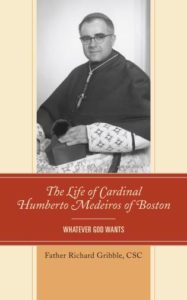
Richard Gribble, The Life of Cardinal Humberto Medieros of Boston: Whatever God Wants. 2021
Cardinal Humberto Medeiros served the Church as priest and bishop in Texas and Massachusetts. An immigrant from the Azores he utilized his superior intelligence, administrative ability, and language skills to move up rapidly in Church ranks. His work with the National Conference of Catholic Bishops, both nationally and internationally, especially with migrant workers, was notable. Medeiros faced a perfect storm of social, political and religious issues in Boston. The author argues that despite the challenges he faced in Boston, Medeiros was true to the Church and his personal moral code, seeking always to serve others rather than be served by them in imitation of Christ.
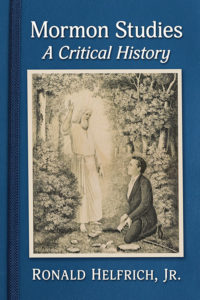
Ronald Helfrich, Jr., Mormon Studies: A Critical History. 2022
Mormonism arose in early 19th century New York and has fired the imaginations of its devotees, critics, and students ever since. Some intellectuals and academics read Mormonism as the product of economic change wrought by the Erie Canal in the Burned-over District of western New York State and upper north-eastern Ohio. Others read Mormonism as an authoritarian reaction to Jacksonian democracy. Finally, some, including most of those who became Mormons in the early 19th century and most of those who are believing Mormons today, read Mormonism as the intervention of God in human history. This book engages with Mormon Studies from its beginnings in the early nineteenth century to the end of the 20th century. It covers those who fought over Mormonism's truth or falsity, on those who tried to understand Mormonism as a religious and sociological phenomenon, and on those who explored the history of Mormonism from a more dispassionate perspective. It concludes with an exploration of the culture war that erupted as Mormon Studies professionalized particularly after the 1960s.

Alicia K. Jackson, The Recovered Life of Isaac Anderson. 2021
University of Mississippi Press
Owned by his father, Isaac Harold Anderson (1835–1906) was born a slave but went on to become a wealthy businessman, grocer, politician, publisher, and religious leader in the African American community in the state of Georgia. Elected to the state senate, Anderson replaced his white father there, and later shepherded his people as a founding member and leader of the Colored Methodist Episcopal church. He helped support the establishment of Lane College in Jackson, Tennessee, where he subsequently served as vice president.
Anderson was instrumental in helping freed people leave Georgia for the security of progressive safe havens with significantly large Black communities in northern Mississippi and Arkansas. Eventually under threat to his life, Anderson made his own exodus to Arkansas, and then later still, to Holly Springs, Mississippi, where a vibrant Black community thrived.
Much of Anderson’s unique story has been lost to history—until now. In The Recovered Life of Isaac Anderson, author Alicia K. Jackson presents a biography of Anderson and in it a microhistory of Black religious life and politics after emancipation. A work of recovery, the volume captures the life of a shepherd to his journeying people, and of a college pioneer, a CME minister, a politician, and a former slave. Gathering together threads from salvaged details of his life, Jackson sheds light on the varied perspectives and strategies adopted by Black leaders dealing with a society that was antithetical to them and to their success.

Sari Katajala-Peltomaa, Jenni Kuuliala, Iona and McCleery, eds. A Companion to Medieval Miracle Collections. 2021
Miracle accounts provide a window into the views and conceptions of the laity, the uneducated, women, and even children, whose voices are mostly missing from other types of sources. They are not, however, simple to use. This volume offers a methodological insight into the medieval world of the miraculous. Consisting of 15 cutting-edge articles by leading scholars in the field, it provides versatile approaches to the origins, methods, and recording techniques of various types of miracle narratives. It offers fascinating case studies from across Europe, which show how miracle accounts can be used as a source for various topics such as lived religion, healing, protection, and family and gender.
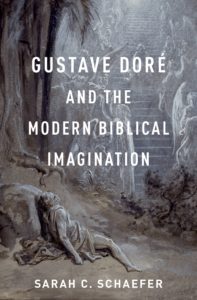
Sarah C. Schaefer, Gustave Doré and the Modern Biblical Imagination. 2021
Gustave Doré and the Modern Biblical Imagination explores the role of biblical imagery in modernity through the lens of Gustave Doré (1832–83), whose work is among the most reproduced and adapted scriptural imagery in the history of Judeo-Christianity. First published in France in late 1865, Doré’s Bible illustrations received widespread critical acclaim among both religious and lay audiences, and the next several decades saw unprecedented dissemination of the images on an international scale. In 1868, the Doré Gallery opened in London, featuring monumental religious paintings that drew 2.5 million visitors over the course of a quarter century; when the gallery’s holdings traveled to the United States in 1892, exhibitions at venues such as the Art Institute of Chicago drew record crowds. The United States saw the most creative appropriations of Doré’s images among a plethora of media, from prayer cards and magic lantern slides to massive stained-glass windows and the spectacular epic films of Cecil B. DeMille. This book repositions biblical imagery at the center of modernity, an era that has often been defined through a process of secularization. The veracity and authority of the Bible came under unprecedented scrutiny and were at the center of a range of historical, theological, and cultural debates. Gustave Doré is at the nexus of these narratives, as his work established the most pervasive visual language for biblical imagery in the past two and a half centuries and constitutes the means by which the Bible has persistently been translated visually for modern audiences.
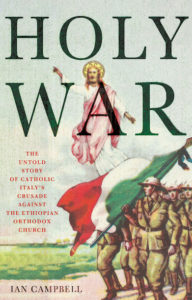
Ian Campbell, Holy War: The Untold Story of Catholic Italy’s Crusade Against the Ethiopian Orthodox Church. 2021
In 1935, Fascist Italy invaded the sovereign state of Ethiopia--a war of conquest that triggered a chain of events culminating in the Second World War. In this stunning and highly original tale of two Churches, historian Ian Campbell brings a whole new perspective to the story, revealing that bishops of the Italian Catholic Church facilitated the invasion by sanctifying it as a crusade against the world's second-oldest national Church. Cardinals and archbishops rallied the support of Catholic Italy for Il Duce's invading armies by denouncing Ethiopian Christians as heretics and schismatics and announcing that the onslaught was an assignment from God.
Campbell marshals evidence from three decades of research to expose the martyrdom of thousands of clergy of the venerable Ethiopian Church, the burning and looting of hundreds of Ethiopia's ancient monasteries and churches, and the instigation and arming of a jihad against Ethiopian Christendom, the likes of which had not been seen since the Middle Ages.
Finally, Holy War traces how, after Italy's surrender to the Allies, the horrors of this pogrom were swept under the carpet of history, and the leading culprits put on the road to sainthood.
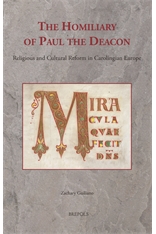
Zachary Guiliano, The Homilary of Paul the Deacon: Religious and Cultural Reform in Carolingian Europe. 2021
As one of the most widely used products of Charlemagne's religious and cultural reforms, the homiliary of Paul the Deacon is a unique monument in the history of Western Europe. Completed around AD 797, this collection of patristic homilies and sermons shaped the religious faith and liturgical practices of the churches in Carolingian Europe and those of countless other churches over the course of a millennium of use. Until now, scholarly study of the homiliary has rested on seven partial witnesses to the collection. This study, however, draws on over 80 newly identified witnesses from the Carolingian period, while providing a brief guide and handlist to hundreds of later manuscripts. It replaces the current scholarly reconstruction of the homiliary, discusses the significance of the collection's liturgical structure and provisions, and considers the composition of the homiliary in the context of Charlemagne's reforms and Paul's patron-client relationships. The study also brings together evidence for the production and use of this text in thirty-three Carolingian monasteries, cathedrals, and churches. The book then addresses the homiliary's theological character: the contents of the homiliary reflected a concern for expressing and defending orthodox doctrine at Charlemagne's court against Trinitarian and Christological heresies, as well as an urgent attention to moral reform in the light of a belief in the imminence of divine judgement. Finally, the study demonstrates the varied uses of Paul's collection and its historical legacy.
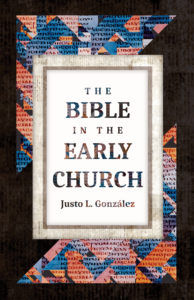
Justo L. González, The Bible in the Early Church. 2022
What is the Bible? To answer this question we must understand the Bible’s origins in the early church. In this book, celebrated church historian Justo González introduces the reader to some important features of the earliest Bibles—for instance, the Bible’s original languages, its division into chapters and verses, and even its physical appearance in its first forms. González also explores the use of the Bible in the early church (such as in worship or in private reading) and the interpretation of the Bible throughout the ensuing centuries, giving readers a holistic sense of the Bible’s emergence as the keystone of Christian life, from its beginnings to present times.
Finally, for staying up-to-date on the latest titles in all fields, we recommend regularly perusing New Books Network and its "New Books in Christian Studies” page. These pages are updated regularly.
